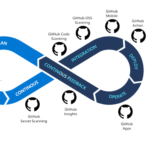Discover how Chaos Engineering can transform your production reliability, boost business outcomes, and future-proof your tech stack. Learn actionable strategies, real-world examples, and the latest tools for success.
Introduction: Why Chaos Engineering Matters More Than Ever
Imagine launching a new feature to millions of users, only to watch your service crash under unexpected load. Or a critical dependency fails, and suddenly your app is down worldwide. These scenarios aren’t rare-they’re the reality of modern, distributed systems. That’s where Chaos Engineering steps in: it’s the practice of deliberately injecting failures into your systems to uncover weaknesses before they cause outages.
In today’s always-on digital world, reliability isn’t just a technical goal-it’s a business imperative. Companies like Netflix, LinkedIn, and Amazon have pioneered Chaos Engineering to proactively build resilience, reduce downtime, and safeguard user trust. This blog will guide you through the need, benefits, strategies, tools, and future of Chaos Engineering, with practical steps and real-world stories to help you get started.
The Need for Chaos Engineering: Business and Technical Drivers
Why Traditional Testing Falls Short
- Modern systems are complex, distributed, and often cloud-native.
- Traditional testing (unit, integration, staging) can’t simulate real-world failures at scale.
- Unexpected outages can lead to lost revenue, reputation damage, and regulatory risks.
Business Benefits of Chaos Engineering
- Reduced Downtime: Identify and fix vulnerabilities before they impact users.
- Faster Incident Response: Teams are better prepared for real failures.
- Improved Customer Trust: Reliable services build brand loyalty.
- Cost Savings: Prevent costly outages and firefighting.
- Regulatory Compliance: Demonstrate proactive risk management.
Real-World Example: Netflix’s “Chaos Monkey” tool randomly terminates production instances to ensure their platform can withstand failures. This practice has helped Netflix achieve industry-leading uptime. Read more
Key Concepts and Trends in Chaos Engineering
What Is Chaos Engineering?
Chaos Engineering is the discipline of experimenting on a system to build confidence in its ability to withstand turbulent conditions in production. It’s not about breaking things for fun-it’s about learning how your system behaves under stress and designing for resilience.
Core Principles
- Hypothesis-Driven: Start with a clear assumption (“If X fails, Y should happen”).
- Controlled Experiments: Inject failures in a safe, monitored way.
- Minimize Blast Radius: Limit impact to avoid widespread outages.
- Automated and Repeatable: Integrate chaos experiments into CI/CD pipelines.
Emerging Trends
- AI-driven chaos experiments for smarter fault injection.
- Integration with observability platforms for real-time insights.
- Chaos-as-a-Service offerings for easier adoption.
Strategies to Implement Chaos Engineering
1. Start Small, Scale Gradually
- Begin with non-production environments to build confidence.
- Move to production with limited scope and strong monitoring.
2. Define Clear Objectives and Hypotheses
- What are your reliability goals? (e.g., “Can our service survive a database node failure?”)
- Document expected outcomes before running experiments.
3. Design a Chaos Engineering Architecture
A typical chaos engineering setup involves:
- Target System: The application or microservices under test.
- Chaos Controller: Orchestrates fault injection (e.g., Chaos Monkey, LitmusChaos).
- Observability Stack: Monitors metrics, logs, traces (e.g., Prometheus, Grafana, Datadog).
- Safety Mechanisms: Automated rollback, alerting, and blast radius controls.
4. Prerequisites for Success
- Comprehensive monitoring and alerting in place.
- Automated deployment and rollback capabilities.
- Stakeholder buy-in from engineering, operations, and business teams.
- Runbooks and incident response procedures documented.
5. Step-by-Step Guide to Running Your First Chaos Experiment
- Identify a critical service or dependency.
- Formulate a hypothesis (e.g., “If this service fails, traffic should reroute to a backup”).
- Choose a chaos tool (see below).
- Inject a controlled failure (e.g., kill a pod, introduce latency).
- Monitor system behavior and user impact.
- Document findings and fix any weaknesses.
- Repeat with broader scope or different failure modes.
Real-World Example: LinkedIn uses chaos engineering to test the resilience of their Kafka-based messaging infrastructure, ensuring that message delivery is robust even during broker failures. Read more
Popular Chaos Engineering Tools: Open Source and Commercial
Open Source Tools
-
Chaos Monkey: The original Netflix tool for terminating instances at random. Best for cloud-native, microservices environments.
GitHub -
LitmusChaos: Kubernetes-native chaos engineering platform. Supports a wide range of experiments and integrates with CI/CD.
Official Site -
Gremlin Free: Offers a free tier for basic chaos experiments, with a focus on safety and automation.
Official Site -
Chaos Toolkit: Open framework for running, automating, and sharing chaos experiments.
Official Site
Commercial Tools
-
Gremlin: Enterprise-grade chaos platform with advanced scheduling, blast radius control, and integrations.
Official Site -
Steadybit: Modern chaos engineering for cloud-native and legacy systems; strong analytics and visualization.
Official Site -
Chaos Mesh: Kubernetes-native, highly extensible chaos platform for simulating a wide range of failures.
Official Site
How to Set Up a Chaos Tool: Example with LitmusChaos
- Install LitmusChaos on your Kubernetes cluster:
kubectl apply -f https://litmuschaos.github.io/litmus/litmus-operator-v1.13.8.yaml -
Create a ChaosExperiment resource (YAML example):
apiVersion: litmuschaos.io/v1alpha1 kind: ChaosExperiment metadata: name: pod-delete spec: definition: scope: Namespaced permissions: - apiGroups: [""] resources: ["pods"] verbs: ["delete"] image: "litmuschaos/go-runner:latest" args: - -c - ./experiments -name pod-delete - Apply the experiment and monitor results via LitmusChaos dashboard.
Real-World Example: Adidas used Gremlin to simulate outages in their e-commerce platform, identifying bottlenecks and improving failover strategies before Black Friday. Read more
Challenges and Solutions in Practicing Chaos Engineering
Common Challenges
- Lack of organizational buy-in or fear of “breaking production.”
- Insufficient observability and monitoring.
- Poorly defined hypotheses leading to unproductive experiments.
- Risk of unintended user impact if blast radius isn’t controlled.
- Integration complexity with legacy systems.
Proven Solutions
- Start with game days in staging environments to build trust and skills.
- Invest in robust monitoring and alerting before chaos experiments.
- Clearly communicate goals and safety measures to all stakeholders.
- Automate rollback and recovery processes.
- Document and share learnings across teams.
Future Outlook: Where Chaos Engineering Is Headed
- Deeper integration with AI/ML for predictive failure analysis.
- Self-healing systems that auto-remediate detected failures.
- Expansion to edge computing, IoT, and multi-cloud environments.
- Chaos Engineering as a managed service (CaaS) for faster adoption.
- Stronger focus on business impact metrics, not just technical outcomes.
Conclusion: Key Takeaways
- Chaos Engineering is essential for building resilient, reliable production systems.
- Start small, automate, and scale experiments safely.
- Choose the right tools for your architecture and maturity.
- Invest in observability, communication, and continuous learning.
- The future is proactive resilience-don’t wait for outages to learn.
Ready to make your production setup more reliable? Contact our experts today to design a chaos engineering strategy tailored to your business needs. Get in touch now!



